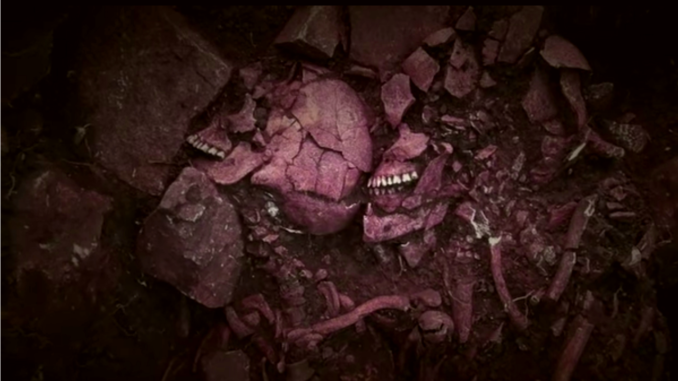
Alongside Diros Bay on the Mani Peninsula at the southern tip of Greece, the forgotten remains of the town of Ksagounaki lie outside the entrance to a special cave. The settlement predates the ancient classic Greeks. Αλεποτρυπα (Alepotrypa), translated from Greek to English, means ‘fox hole’ – the underground den where a fox makes its home. Local lore holds that the cave was discovered by a fox hunter’s dog in 1958. The cave is about one kilometer long (nearly two-thirds of a mile) with high ceilings, multiple chambers, and an underground lake at the far end.

After decades of study, archaeologists believe Alepotrypa was both a dwelling place for the living and a place for ritual burials. Alepotrypa and Ksagounaki were an important settlement that date back at least as far as the late Neolithic and early Bronze Ages. The cave may have been used by even earlier peoples. Artifacts that have been found include tools, weapons, bronze, silver, copper, obsidian, and “Neolithic pottery shards, which came from a variety of places”. The fact that pottery which originated elsewhere was found at the site is evidence that it may have been a regional trading hub. The archeological site is in a central location in the eastern Mediterranean, a crossroads between three continents. The evidence may also mean that people came from all over Greece to bury their dead here.
Dr. Giorgos Papathanassopoulos of the Greek Ministry of Culture was the first archaeologist to excavate Alepotrypa, beginning in the 1970s. He has suggested that Alepotrypa is the origin of the idea of Hades, the underworld domain of the dead in ancient Greek mythology. Hundreds of ritual burials have been found inside the cave, including a couple in an embrace. Approximately 5,000 years ago, the entrance to the cave collapsed, trapping perhaps hundreds of people inside where they then died. The cave entrance remained hidden thereafter until its rediscovery in the 1950s.
Ten years ago, a Greek-American archaeological partnership was formed to continue the study of Alepotrypa. The Diros Project is lead by Drs. Giorgos Papathanassopoulos, Anastasia Papathanasiou (also of the Greek Ministry of Culture), William Parkinson of the Field Museum in Chicago, and Michael Galaty of Millsaps College in Jackson, Missouri. The project examines the site from an anthropological perspective.
One of the project’s important advances involves the use of a geographic information system (GIS) database. With GIS, location data for each artifact and burial site excavated is entered into the GIS database. The software can then be used to create maps in two and three dimensions to help scientists visualized what they’ve found. (Visit this link to see pics from the dig and the main chamber of the cave). The GIS database was also used to create an accurate map of the entire cave, as shown in the figure above.
“This Greek Cave is Teeming With History—and Bodies | National Geographic” (3:00):
Question of the Night: Have you toured a public cave? What about exploring caves as a hobby (spelunking)?
